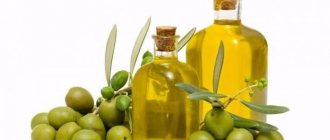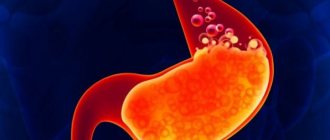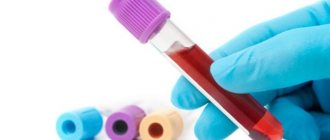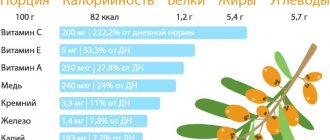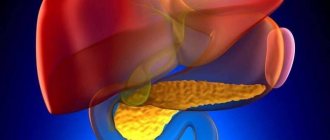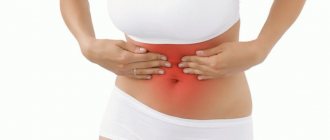Chronic pancreatitis in remission
This letter brings together a group of questions that came to my email address.
I am publishing the contents of the letter and the response to it on each of its points. Wikipedia definition:
Remission (Latin remissio “decrease, weakening”) is a period in the course of a chronic disease, which is manifested by a significant weakening (incomplete remission) or disappearance (complete remission) of its symptoms (signs of the disease).
What is remission of chronic pancreatitis? Signs. Can there be pain during this period?
Pancreatitis is a group of diseases that accompany inflammation of the pancreas - more details here >>. If signs of pancreatitis are present for a long time, or periods of rest are followed by periods of exacerbation of the disease (relapses), then in this case we are talking about chronic pancreatitis.
Remission is a condition for any disease, including pancreatitis, when a person does not show symptoms of the disease for a long time.
In pancreatology, there are different types of remission:
In turn, complete remissions can be divided into:
- Persistent remission, in which signs of pancreatitis do not appear for a long time, at least 0.5 years, for several years.
- Unstable remission - an unstable condition, remissions and exacerbations replace each other.
Therefore, the answer to the first question is:
Remission of pancreatitis is a condition in which there are no symptoms of the disease. Therefore, there is no pain either.
How to properly enter the remission stage? What time period is required for this?
— question No. 2.
Exit from the period of acute pancreatitis or from the period of exacerbation of chronic pancreatitis is carried out under the supervision of the attending physician in the surgical department of the hospital.
The duration of hospital treatment is determined by the severity of the disease and associated complications. If there is an exacerbation of chronic pancreatitis, then it may take 2-3 days to relieve pain, intoxication, and to carry out the necessary tests. The patient then continues treatment at home according to the treatment regimen proposed to him. Following a special diet for pancreatitis is mandatory.
A diagnosis of acute pancreatitis requires longer hospitalization due to associated complications. In order to relieve inflammation in a diseased organ, it is necessary to ensure a state of rest for the pancreas. For this purpose, parenteral nutrition is used (intravenous nutrition, bypassing the gastrointestinal tract). The duration of hospital stay is determined by the attending physician, from 1 week to 1.5 months. After discharge from the hospital, the patient also continues treatment at home. Following a special diet for pancreatitis is mandatory.
The onset of a period (stage) of stable remission occurs 0.5 years after completing the drug course of treatment. During the period of stable remission, the doctor allows the transition from diet No. 5p to diet No. 5. Diet No. 5 is a balanced diet; fats, proteins, carbohydrates, vitamins and microelements necessary for life are presented in the diet in the quantities necessary for the body. But fats are included in the diet in the minimum required amount. Salt should be limited.
In the stage of stable remission, dieting is required for many years. In practice - for life. Alcohol is contraindicated.
Strict adherence to diet No. 5p and the principles of dietary nutrition for pancreatitis will allow for the onset and duration of stable remission. In the stage of stable remission, diet No. 5 is allowed.
Is the remission stage a stable condition or are attacks of pancreatitis possible again?
— question No. 3.
Chronic pancreatitis refers to diseases that have a phase-progressive course. What does the phase course of the disease mean? This suggests that periods of remission alternate with periods of exacerbation of the disease. With the progressive course of the disease, with each subsequent exacerbation, the inflammatory process covers increasingly larger areas of the pancreas and damages it more and more over time. Inflammation of the pancreas is accompanied by destructive tissue changes, which can be diffuse, focal or segmental. Over time, these destructive changes are replaced by fibrous tissue, and the pain decreases, but the functional insufficiency of the pancreas progresses (increases). The pancreas cannot produce enzymes needed for digestion.
The tasks of everyone suffering from chronic pancreatitis are:
- increase the duration of periods of remission and achieve a phase of stable remission;
- reduce the intensity and duration of exacerbation of the disease, ensuring that exacerbations occur as rarely as possible.
How to solve these problems?
- Taking medications prescribed by a doctor, for example, enzyme preparations.
- Dietary nutrition for pancreatitis.
- Diet No. 5p is a treatment diet for pancreatitis. Diet No. 5 is a diet in the stage of stable remission.
- Mandatory adherence to dietary principles. Follow the REMINDER for pancreatitis.
- Avoid stress and nervous stress. Monitor the alternation of work and rest. Get enough sleep at night.
What can you eat with chronic pancreatitis in remission?
— question No. 4.
For pancreatitis in the stage of stable remission, the doctor allows the transition from diet No. 5p to diet No. 5 according to the Pevzner classification.
Diet No. 5 according to the Pevzner classification also refers to therapeutic diets, the observance of which is mandatory.
Including prohibited foods in the menu, for example, sausages, dumplings, coffee, alcohol on holidays, is contraindicated.
Many articles on this site talk about what diet No. 5 should be, what foods and dishes you can eat with pancreatitis in remission. Deviation from the diet entails an exacerbation of the disease, irreversible processes in the pancreas lead to a relapse.
Chronic pancreatitis - causes and proper treatment of the pancreas
The quality of nutrition and the environment directly affect our health.
The diagnosis of chronic pancreatitis is made annually to more than 52 thousand patients in the Russian Federation. Regardless of the fact that most people consider inflammation of the pancreas to be not a dangerous disease, the mortality statistics for this pathology are very high and remain around 25%.
However, following the doctor’s instructions and diet can minimize the manifestation and complications of this disease.
Pancreatitis - causes
Increased pressure in the pancreatic ducts leads to stagnation of digestive juice, which over time disrupts the structure of the organ, after which its own enzymes begin to destroy the cells of the gland and provoke the development of inflammation. This is what the mechanism of pancreatitis looks like. However, inflammation of the pancreas does not just happen. The following reasons can lead to this condition:
- Alcohol abuse.
- Gallstone disease can cause chronic pancreatitis, because the gallbladder and pancreas have a common duct that goes into the intestine.
- Duodenal ulcer and enteritis inhibit the outflow of pancreatic secretions.
- Against the background of an aggressive course of gastric ulcer, chronic pancreatitis often develops.
- Diseases such as cystic fibrosis or polycystic disease can lead to hereditary pancreatitis.
- Neglecting nutritional rules and eating unhealthy, heavy foods leads to self-destruction of the pancreas.
- Congenital pancreatic defects associated with changes in the duct can lead to disruption of the normal outflow of digestive juice from the organ.
- In case of heart or liver failure, swelling and subsequent inflammation of the pancreas may occur.
- Infection of the glandular tissue can lead to disruption of its functionality and inflammation.
- Taking strong medications can have a toxic effect on the pancreas with subsequent disruption of enzyme production and inflammation.
- Failure of the immune system can lead to autoimmune pancreatitis.
How dangerous is pancreatitis?
Not only the manifestations of this disease, but also the complications that can accompany inflammation of the pancreas pose a great danger. Symptoms and treatment absolutely cannot be ignored, because the following pathological conditions can become a consequence of untreated pancreatitis:
- cachexia;
- diabetes;
- abscesses;
- cystic formations;
- infections of the gland and nearby organs;
- formation of stones in the pancreas;
- pleurisy and pneumonia;
- inflammation of nearby organs;
- atelectasis;
- biliary hypertension, hepatitis, cholecystitis;
- compression of the bile ducts, jaundice;
- splenic infarction;
- pancreatic cancer.
Chronic pancreatitis - symptoms
Inflammation of the pancreas has the following symptoms:
- Pressing burning pain in the left side or girdling pain after eating heavy food or alcohol.
- Dyspeptic symptoms: nausea, bloating, increased salivation, belching, loose stools.
- Metabolic failure with such manifestations as weight loss, dry skin and hair, brittle nails, anemia.
- Diabetes mellitus can become a symptom of pancreatitis.
- Frequent urge to defecate, particles of undigested food, diarrhea and gas formation.
Stages of chronic pancreatitis
Depending on the stage of pancreatitis, signs of pancreatic inflammation may vary. In total, it is customary to distinguish four stages of this disease:
- The perclinical stage
does not have any signs or manifestations, and the presence of the disease is determined by chance during a medical examination. - The second stage
can last 5-10 years, moving from exacerbation to remission. There are already girdle pains here, but there is no dyspeptic syndrome. - The third stage
has pronounced clinical symptoms with dyspeptic symptoms and pain. - The fourth stage
by pancreatic atrophy. The pain syndrome is dulled, but rapid weight loss and the development of diabetes mellitus are noted. This is a condition borderline with cancer.
Exacerbation of chronic pancreatitis - symptoms
At different stages of inflammation of the pancreas, symptoms vary, but exacerbation of chronic pancreatitis is easily recognized by the following signs:
- dull or sharp pain in the hypochondrium area spreading under the scapula;
- bitterness in the mouth;
- nausea;
- bloating;
- rumbling;
- diarrhea;
- undigested food in stool;
- lack of appetite;
- weight loss;
- white coating on the tongue.
Chronic pancreatitis – remission
With chronic pancreatitis in remission, signs of inflammation of the pancreas disappear completely, and for a long time the patient can feel absolutely healthy. It is common to distinguish between several types of remission:
1. Partial remission.
Chronic pancreatitis minimally preserves symptoms and requires treatment, but only at moments when the disease begins to make itself known.
2. Complete remission
characterized by the complete absence of manifestations of the disease and is divided into two types:
- stable remission – from six months to two years;
- unstable remission - alternation of an asymptomatic course of the disease with exacerbations.
Chronic pancreatitis - treatment
Inflammation of the pancreas requires complex treatment. Both drug therapy and adherence to a healthy lifestyle, and most importantly, diet, are important here. Nutrition for chronic pancreatitis imposes many prohibitions and rules on the menu:
- fractional meals.
- salt restriction;
- fat restriction;
- protein restriction;
- ban on heavy food.
Chronic pancreatitis - clinical recommendations
In the initial stages, chronic pancreatitis can easily be transferred into stable remission.
The recommendations of a competent specialist and their strict adherence are the first step on the path to recovery:
- The most important thing is to give up bad habits - drinking alcohol, smoking.
- Bad eating habits should be eliminated: coffee, smoked, fatty, fried foods, spicy foods, sweets and chocolate, pickles and sourdoughs.
- Strictly follow medical recommendations and take medications.
- Consultation with an endocrinologist is required.
Inflammation of the pancreas is treated with medication strictly under the supervision of a doctor based on individual prescription. The group of drugs for the treatment of chronic pancreatitis includes:
- Enzyme products for correcting digestion: Mezim, Pancreatin, Creon.
- Antacids to protect the mucous membranes: Almagel, Rennie, Maalox.
- Enzymatic inhibitors that suppress acidity: Omez, Omeprazole.
- Painkillers: Nosh-pa, Drotaverine.
- Anti-inflammatory drugs are best used in the form of injections: Diclofenac, Ketorolac.
- Prokinetic drugs for nausea: Cerucal, Motilium.
Alternative treatment of chronic pancreatitis
Do not think that inflammation of the pancreas is a modern disease. The folk medicine cabinet contains many ancient recipes on how to treat chronic pancreatitis. Diet is one of the most effective ways to improve your health. But there are other methods based on the gifts of nature that can alleviate chronic and acute pancreatitis:
Digestive potato-carrot juice
Ingredients:
- Potatoes – 2 tubers;
- Carrot – 1 medium root vegetable.
Preparation, use
- Well-washed potatoes and carrots, without cutting off the skin, pass through a juicer.
- The resulting glass of juice should be taken half an hour before a meal.
- The course of treatment is 1 week. Then you need to take a week's break and, if necessary, repeat the treatment.
Pain relieving burdock tea
Ingredients:
- Chopped burdock root - 3 tablespoons;
- Boiling water – 1 l.
Preparation, use
- Pour boiling water over burdock root and leave, wrapped in warmth, for 3 hours.
- Then over low heat you need to simmer the infusion for 10 minutes and cool.
- You need to take 100 ml of tea three times a day before meals.
- The course of treatment is 5 days.
One of the leading roles in treatment is played by diet for pancreatic inflammation. To speed up the healing process, you should remember the basic rules of nutrition, what you can’t and what you can eat if you have inflammation of the pancreas:
- Broths based on meat, fish, mushrooms are taboo.
- Food should be low-calorie, preferably steamed.
- The daily diet is divided into 5-6 meals in portions of no more than 300 g.
- The BJU of the daily diet is built according to the following scheme: fat no more than 60 g, carbohydrates no more than 400 g, proteins no more than 120 g. The amount of salt is limited to 8 g for the whole day.
- If diarrhea occurs with pancreatitis, then it is necessary to exclude gas-forming foods from the menu: peas, legumes, cabbage.
- Food should be warm, but not cold or hot.
- It is necessary to include in the menu products containing proteolytic enzyme inhibitors: potatoes, oatmeal, egg whites.
- The emphasis in creating a diet is on plant foods: vegetables, fruits, vegetable oils, cereals, low-fat dairy products.
- Lean meat and fish are allowed to be consumed during the period of remission.
| Hirsutism is a disease accompanied by male pattern hair growth in women. The disease changes the appearance of patients and leaves an imprint on their psycho-emotional state. For complete recovery, the help of a psychologist is often required. | Pulmonary sarcoidosis – how to identify and treat the disease at all stages? Pulmonary sarcoidosis is an insidious disease with nonspecific symptoms. Often, pathology is detected during a routine examination, but the disease can be suspected at an early stage based on characteristic signs. |
| Cholecystitis - what is this disease and how to get rid of it? It is important to understand what cholecystitis is, since this disease is very common. The disease can have an acute or chronic form, each of them has its own symptoms. When treating the disease, conservative therapy or surgery is prescribed. | Norovirus infection - what is it, how to recognize and treat norovirus? Every person should know norovirus infection, what it is, how contagious it is and how to fight it. Timely and correct treatment can reduce the duration and severity of the disease and prevent infection of others. |
Source: https://womanadvice.ru/hronicheskiy-pankreatit-prichiny-i-pravilnoe-lechenie-podzheludochnoy-zhelezy
Remission of chronic pancreatitis: signs
Pancreatitis is a pathology caused by the presence of an inflammatory process in the pancreas. In cases where the symptoms of pancreatitis are observed for a long period, or periods of rest are replaced by a sharp exacerbation, the disease is classified as chronic.
In chronic pancreatitis, remission is characterized by the absence of symptoms in the patient for quite a long time. There are several types of remission periods:
- complete remission - there is a complete disappearance of any signs of the disease;
- incomplete (partial) remission - some symptoms of the pathology persist and may periodically remind themselves.
The first sign of remission is the absence of abdominal pain.
Full type remission can be divided into several types:
- Persistent remission - there is a complete absence of symptoms or signs of pathology. The duration of such remission can be from six months to 2 years;
- Remission is unstable. During such periods, exacerbation of the pathology alternates with a subsidence of the process, and the interval between them can be quite short.
Consequently, remission of chronic pancreatitis will mean the absence of signs of the disease, as well as pain attacks.
What is remission for pancreatitis?
Chronic pancreatitis in remission is characterized by a decrease in the intensity of processes affecting the pancreas, as well as the absence of symptomatic signs.
This period does not occur by itself; to achieve it, it is necessary to use special therapeutic procedures using certain groups of medications, folk remedies, as well as adherence to a special diet before and during remission.
In the materials of the presented article, we will consider in more detail the period of onset of remission in pancreatitis, how much time is needed for this, what it is, its signs, as well as the basic principles of maintaining the pancreas, preventing the occurrence of re-exacerbation.
Remission stage of chronic pancreatitis
Remission is that long period of time during which the patient is completely free of symptoms and signs of a developing disease.
The main task of patients at the onset of this period is to use modern methods of preventive treatment of pancreatic disease.
The use of pathogenetic therapy is prescribed in the absence of signs of exacerbation of the pathology to normalize the secretory functionality of the stomach, stimulate regeneration processes in the pancreas, as well as to eliminate dyskinesia in the cavity of the gallbladder and bile ducts, for which a special protein diet with a reduced amount of fats and carbohydrates is also prescribed.
Signs of remission
There are two types of remission periods:
- A period of complete remission, characterized by the complete absence of signs of the disease.
- A period of partial remission, during which certain symptomatic signs remain, reminiscent of a gradually developing pathology.
- A persistent period, which is characterized by a stable condition of the patient and a complete absence of signs of pancreatic pathology for from half a year to 3-5 years.
- An unstable period, characterized by an unstable condition and alternating periods of remission and exacerbations.
- Application of the most popular method using a beekeeping product - natural honey, which helps to increase the intensity of regeneration processes. Honey is recommended for consumption in the amount of 5 grams, or 1 teaspoon, dissolved with milk half an hour before meals.
- Taking a decoction of rosehip, which also has a preventive effect against the development of cholecystic pathology, will help speed up the processes of bile outflow. You need to take one glass with a meal.
- alfalfa,
- Golden mustache,
- calendula,
- immortelle,
- wormwood,
- chamomile,
- dill, etc.
The period of complete remission is also divided into two subtypes:
Can there be pain during this period?
The period of remission of a chronic form of pancreatic lesion of the pancreas is characterized by the absence of symptomatic signs, which means that painful sensations also do not bother people throughout the entire period of weakening of the disease, which significantly increases the level and quality of life of people with this pathology.
Remission: stability of the stage, are new attacks possible?
Pancreatic damage to the pancreas, which has a chronic form of development, is a disease of a progressive nature, which means that the ensuing period of remission over time may be replaced by an exacerbation of the disease. As a result of this, pathological metamorphisms begin to develop in the form of diffuse and focal damage to the parenchymal gland.
After a certain period of time, the glandular tissues of the pancreas are partially replaced by fibrous ones, and the patient begins to feel a decrease in the intensity of the symptoms that appear, but the level of functionality of the affected organ is already becoming less. Over time, the pancreas completely ceases to produce pancreatic enzymatic components necessary to ensure normal food digestion processes.
It is worth noting that with pancreatic pathology of a chronic nature in the gland cavity, the absence of symptomatic signs and pain may also mean the development of complications of the disease.
How to enter the remission stage? How long does it take?
The patient’s recovery from the stage of an acute form of pancreatic pathology or from the stage of exacerbation of a chronic form of the disease should be carried out in a hospital setting in a surgical or intensive care unit under the strict guidance of the attending physician.
The duration of treatment for acute pathology directly depends on the degree of damage to the parenchymal organ and on the presence of parallel pathologies.
In case of exacerbation of the chronic type of the disease, it may be necessary to treat for at least 2-3 days to eliminate acute pain, eliminate intoxication processes and conduct a complete medical history.
After which, the patient is discharged home, where he needs to continue treatment of the pathology, according to the prescribed regimen. Mandatory diet therapy is prescribed, which consists of following a special diet with table No. 5.
In the acute form of pancreatic disease, a longer course of hospitalization is required, the duration of which can vary from 10 days to 2 months.
When stable remission occurs, adherence to a dietary diet is prescribed for a period of 5 years or more.
Very important! In case of pancreatic damage to a parenchymal organ, completely avoid the use of alcohol-containing products.
Traditional methods of maintaining the pancreas during remission
The following recipes from traditional healers will help to provide effective support to the affected parenchymal organ during a period of stable remission:
Infusions of medicinal herbs, such as:
It is important to remember that it will not be possible to completely eliminate pancreatic pathology with folk remedies, but their regular use will help increase the period of remission and reduce the frequency of exacerbations.
Principles of dietary nutrition to avoid complications
The principles of the diet for remission of pancreatitis are as follows:
- provide the body with all the necessary substances,
- compliance with thermal and chemical methods of sparing,
- ensuring fractional power supply,
- maximum level of restriction of foods with high fat content,
- chewing food thoroughly,
- preventing the occurrence of overload in the functioning of the affected organ.
Cooking must be done by stewing, boiling or baking in the oven; frying is strictly prohibited.
But, before preparing any dish, you need to know what is allowed to eat, according to the diet in remission for pancreatitis, and which ingredients must be completely excluded from the diet.
List of recommended products and dishes
Prohibited Products
The list of prohibited products that can cause acute pancreatitis or an acute phase of chronic pathology includes the following ingredients:
- all smoked and pickled foods, as well as pickled foods and spicy foods,
- fried food,
- canned food,
- alcoholic and carbonated drinks,
- juices, fruit and berry crops with a high level of acidity,
- strong tea and coffee,
- Borodino bread,
- baked goods and confectionery sweets,
- fish and meat broth.
Entering the stage of remission: treatment methods
The patient's transition into stable remission in chronic pancreatitis from the acute stage is carried out under the supervision of the attending physician or gastroenterologist. Most often, this occurs in an inpatient surgery department for maximum control over the patient’s condition.
A gastroenterologist in a hospital setting exercises full control over the patient’s condition
The duration of therapy carried out in a hospital setting will depend on the severity of the pathology and complications arising from the disease. In case of exacerbation of chronic pancreatitis, it is recommended to spend at least 3 days in the hospital to eliminate signs of intoxication and pain. Further treatment of the patient is carried out at home with strict adherence to the treatment regimen and doctor’s recommendations. The patient must adhere to a diet.
If a patient is diagnosed with steatorrhea (excessive excretion of fats in feces), enzyme preparations are prescribed: Creon, Pancreatin. It is possible to prescribe medications that contain bile, for example, Festal. The dosage of medications is prescribed for each patient individually, which depends on the degree of steatorrhea and the amount of fat secreted. As a rule, the duration of treatment takes a long time; in some cases, lifelong use of enzyme agents is prescribed. In severe cases, it is additionally recommended to take vitamins A, E, K, B and medications to improve intestinal motility.
Depending on the complications, additional medications are prescribed
Acute pancreatitis will require a longer recovery, as it is usually accompanied by complications. In this case, it is necessary to ensure complete rest of the pancreas, so normal nutrition is completely excluded and replaced with intravenous nutrition. The time spent in hospital can vary from 10 to 30 days.
Persistent remission is observed 5-6 months after drug therapy. During this period, a transition from diet No. 5P to No. 5 is allowed. It is also necessary to exclude smoking and uncontrolled use of medications.
Important! The main purpose in the remission stage of pancreatitis is complete cessation of alcohol consumption.
What is remission in pancreatitis: features of the course and principles of nutrition
The “popularity” of pancreatic disorders is increasing every year. This factor requires measures to be taken to reduce the increase in incidence. Chronic pancreatitis in the remission stage is replaced by signs of transition to a protracted course. The nature and distinctive features of the symptoms of exacerbation after a period of improvement must be known and distinguished in order to prevent serious consequences in time.
Anatomical image
A state of remission occurs in any chronic disease, and pancreatitis is no exception. It means the absence or mild manifestation of symptoms of the pathology for a long period.
Gastroenterologists distinguish the following types of remission:
- complete (signs of the disease completely disappear);
- partial (some symptoms persist).
The state of complete rest is persistent. With it, the symptoms of the pathology do not appear from six months to several years.
But there is also an unstable state: remission is often replaced by exacerbation, and vice versa.
Type of organ during exacerbation
Symptoms
The chronic form of the disease can periodically cause pain in the left hypochondrium, which intensifies after eating food, especially spicy, fried, and fatty foods. The pain occurs even after coffee and sometimes lasts an hour, or may not stop for days. Often after eating, nausea and vomiting, fever, pressure surges, and sweating appear.
Sometimes the illness occurs without obvious symptoms. This makes it much more dangerous than the acute type. In this case, it is difficult to recognize whether the pathology is in remission or whether the symptoms are simply blurred.
If inflammation does not appear for several months, it is considered that there has been an improvement. Remission in chronic pancreatitis, if complete, has no signs, but it should be remembered that this is not a complete recovery. And at any moment everything can change.
Sometimes remission of pancreatitis occurs after eating:
- aching pain in the abdomen;
- bloating;
- changes in the color and smell of stool.
With partial improvement, some symptoms persist. A similar phenomenon usually occurs upon discharge from the hospital to home treatment.
How to improve?
The transition from the acute form to the remission state takes place under observation in a hospital. The duration of treatment depends on the patient’s condition and concomitant pathologies.
If an exacerbation of a chronic disease occurs, it will take at least two days to reduce the severity of pain, reduce the level of intoxication, conduct research and prescribe appropriate treatment.
After this, therapy continues at home or on an outpatient basis according to the doctor’s suggested regimen to bring the pathology to remission. A prerequisite is a special diet and compliance with all medical recommendations.
Persistent relief occurs six months after the end of drug therapy, but a new exacerbation is possible. For this reason, the patient will have to prepare himself for many years of compliance with the doctors’ recommendations.
Treatment
Treatment at this phase consists of maintaining proper functioning of the stomach, eliminating malfunctions in the biliary system and stimulating the pancreas. If necessary, the gastroenterologist prescribes medications, but most of the time this is unnecessary at this stage. The main role here is played by food restrictions.
Diet
Persistent relief allows you to subsequently move from the strict system No. 5p to the less strict system No. 5.
This diet implies the consumption of balanced, gentle food, a minimum of fats, proteins, carbohydrates and vitamins necessary for life. Be sure to limit salt. The diet was developed by gastroenterologists.
Secretory nutrition helps normalize the condition. It is aimed at restoring the functioning and integrity of the gastrointestinal tract and reducing weight.
The dishes that constitute therapeutic nutrition in this case must satisfy the need for all microelements. A constant lack of certain foods will lead to “scarification” of the digestive tract.
Nutrition principles:
- It is advisable to eat small portions, 5-6 times a day;
- refuse too hot, smoked, spicy and fatty foods;
- eat chopped, pureed food;
- drink at least one and a half liters of water a day, but do not wash down what you eat;
- at least 40% of food is vegetables and fruits.
The diet includes:
During the disease, drinking alcoholic beverages is contraindicated, even during the remission period.
Source: https://lechigastrit.ru/pankreatit/formy/xronicheskij-stadiya-remissii.html
Remission: stability of the stage and possible attacks
Chronic pancreatitis is classified as a pathology that has a progressive course. This means that stages of remission can alternate with attacks of exacerbation of the disease. During this process, pathological processes in the form of diffuse and focal formations can be observed. After some time, the normal mucous membrane of the gland is replaced by fibrous tissue, the patient feels a weakening of symptoms, but the functionality of the organ decreases. Over time, the gland completely stops producing enzymes necessary for normal digestion.
In chronic pancreatitis, the absence of symptoms may also mean complications in which the patient also does not feel pain
Nutrition during remission
As mentioned above, remission for chronic pancreatitis involves following a diet - initially No. 5P, and then No. 5. These types of diets are therapeutic, so it is strictly forbidden to cancel them on your own.
It is prohibited to include food items on the menu yourself, for example, smoked meats, dumplings, coffee drinks, and alcohol. What exactly Diet No. 5 will include will be described in detail by your attending physician, including determining the required amount of food per day.
Advice! If you are invited to a party or to a cafe, do not hesitate to clarify the composition of the offered treats. If it is impossible to taste the dishes, limit yourself to eating fruit and water.
There is no need to take risks with this disease. Do not forget to remind yourself that failure to follow a diet worsens the course of the disease and provokes its further progression.
Following a diet is important not only during attacks of the disease, but also during remission
Chronic pancreatitis and sports
Important! Any physical activity for acute pancreatitis, as well as for chronic pancreatitis in the acute stage, is strictly contraindicated. The patient should be at rest.
For pathology without obvious signs of exacerbation, a course of physical therapy is recommended. In particular, it is indicated during the period of remission. In this case, exercise therapy is an important part of rehabilitation.
The purpose of physical therapy is as follows:
- improved blood circulation in the gastrointestinal tract, which will have a positive effect on the digestion process;
- preventing stagnation in the gastrointestinal tract;
- improving the movement of gastric juice.
In the stage of remission (both complete and partial) with chronic pancreatitis, the following types of exercise therapy are recommended:
- calm walking;
- light massage of the gastrointestinal tract (stroking from the center of the abdomen to the left side);
- various breathing exercises, for example, from yoga or Strelnikova gymnastics.
Relaxing yoga classes together with breathing exercises will be beneficial
All breathing exercises are recommended to be performed several times a day (morning and evening), they can be combined with walking or abdominal massage. Please note that all exercises should not cause discomfort or pain when performed.
Preventive measures regarding exacerbation of the disease should include continuous adherence to diet, proper lifestyle and doctor’s recommendations. Treatment carried out in sanatorium-resort institutions plays a fairly significant role in prolonging remission and improving general health.
What should a patient with chronic pancreatitis do?
How to properly go into remission with chronic pancreatitis, what needs to be done for this and what tasks to follow, we will consider further.
The task of patients diagnosed with chronic pancreatitis is to:
- increase the time period of remission, as well as its durability;
- reduce the stages of exacerbation of the disease as much as possible and achieve their minimum number.
What is needed to solve the above problems:
- undergo a course of therapy using medications, followed by supportive treatment using enzyme preparations;
- strictly follow the diet prescribed by your doctor;
- minimize physical activity, as well as psycho-emotional stress, avoid stress.
Chronic pancreatitis: how to achieve remission
Chronic pancreatitis is an inflammatory process in the pancreas, in which the parenchyma of the organ is destroyed, fibrous changes, exocrine and endocrine insufficiency develop. Despite the fact that the disease gradually progresses, it can be combated by achieving long-term remission through proper nutrition and lifestyle changes.
Diagnostics
To confirm the diagnosis, the doctor collects complaints, analyzes symptoms, conducts an examination and prescribes the following tests:
- A general blood test to confirm the inflammatory process. Pancreatitis is supported by an increase in the number of leukocytes, C-reactive protein, and an acceleration of the erythrocyte sedimentation rate.
- Biochemical blood test, which determines the level of amylase, alkaline phosphatase, AST, ALT. Also pay attention to the amount of bilirubin, fibrinogen and total protein. The main sign of exacerbation of the inflammatory process is a fivefold increase in the level of amylase in the blood.
- Biochemical urine analysis to determine the level of amylase (diastase).
- Ultrasound examination, which will allow not only to visualize the pancreas, but also other abdominal organs (gallbladder and its ducts, liver, spleen).
- If the question is about surgical intervention, then diagnostic MRI, MSCT or laparoscopy is prescribed. These examinations allow us to judge the degree of the destructive process.
How does chronic pancreatitis manifest?
The transition of pancreatitis to a chronic form is possible in the absence of the necessary treatment of an acute disease and neglect of doctor’s prescriptions.
The main reasons for the development of pathology are alcohol abuse and concomitant gallbladder diseases. This etiology is diagnosed in 95-98% of cases when visiting a doctor. Predisposing factors that increase the risk of developing changes in the pancreas include:
- pathologies in the duodenum;
- history of surgical intervention to treat diseases of the stomach and biliary tract;
- history of endoscopic retrograde cholangiopancreatography;
- injury or injury to the abdominal area;
- therapy with certain potent drugs (antibacterial, sulfonamides, etc.);
- infectious (hepatitis virus, mumps, etc.) and parasitic (ascariasis, etc.) damage to the body;
- structural abnormalities of the pancreas;
- violation of metabolic processes;
- dysfunction of the endocrine system;
- development of vascular diseases;
- hereditary factor.
About 30% of cases are of unknown etiology.
Chronic pancreatitis occurs with pain, which is localized in the epigastric zone, radiating to the hypochondrium and lower back. The onset of the symptom is associated with food intake and is observed after it, approximately 40-60 minutes. Other signs of the disease include diarrhea, nausea, vomiting, flatulence, loss of appetite and weight.
Forms of remission
If you follow all the instructions determined by your attending physician, you can achieve stable remission. And its duration can reach several decades.
There are several forms of this stage of chronic pancreatitis.
- Partial remission
The disease occurs with minimal severity of clinical manifestations. Treatment is carried out in case of presence of symptoms in the acute stage to reduce intensity or completely eliminate.
- Complete remission
In this case, manifestations of the disease are completely absent. Complete remission is divided into stable, in which symptoms do not occur for 6-24 months, and unstable, when the pathology occurs with alternating stages of exacerbation and stages of absence of clinical signs.
Despite the fact that the disease has entered remission, this does not mean that the inflammatory process has disappeared. In any case, it is necessary to maintain the correct image, correct nutrition, and eliminate bad habits.
We follow the doctor's recommendations
To achieve long-term remission, it is important to systematically undergo control examination of the pancreas to identify signs of exacerbation. These are laboratory tests (blood, urine, feces) and instrumental diagnostics (ultrasound, gastroscopy, radiography).
In addition, it is necessary to comply with the recommendations and prescriptions determined by the attending physician and which contribute to the normalization and restoration of the functioning of the organ. First of all, it’s proper nutrition and taking medications. In some cases, surgical intervention is resorted to.
If symptoms of exacerbation of pathology occur, self-medication is not recommended. You need to call an ambulance or independently deliver the patient to the inpatient department for qualified diagnostics.
On the first day, a person is prescribed complete fasting, complete rest, and bed rest. Symptomatic and etiotropic treatment using the following medications is indicated:
- painkillers to relieve pain symptoms;
- drugs that suppress organ secretion;
- enzymes;
- antibacterial agents to reduce the risk of infections.
Power control
Meals for chronic pancreatitis should be divided - preferably in small portions, but often throughout the day. It is important to exclude from the diet foods that irritate the already inflamed gland and increase the production of enzymes. Most products are prepared by boiling and baking, then grinding to a mushy state (this is important in case of exacerbation of the pathology).
Despite the need to consume pureed foods, you should not abuse this diet for a long time. Numerous reviews confirm that in this case, appetite decreases, and this causes weight loss. Therefore, as soon as the condition has improved and the acute symptoms have disappeared, it is better to switch to an unprocessed diet.
Prohibited products for the period of treatment of chronic pancreatitis include:
- alcohol;
- fried food;
- smoked, processed meat products - sausage, frankfurters, small sausages;
- instant products - fast food;
- fatty meats and fish;
- canned food, pickles;
- porridge from buckwheat, rice and pearl barley;
- a large number of vegetables and fruits, especially rich in fiber;
- chicken eggs cooked in the form of an omelet;
- sweet sparkling water.
Among the permitted products:
- vegetables containing fiber in small amounts, boiled or baked - beets, potatoes, carrots, celery, etc.;
- pureed vegetable broth and soups based on it;
- lean meat (rabbit, chicken, etc.) and fish;
- low-fat dairy products - kefir, cottage cheese, cheese;
- porridge from buckwheat, rice, pearl barley, oatmeal, semolina, pasta;
- yesterday's bread;
- chicken eggs in the form of an omelet or soft-boiled;
- fruits and berries with a non-acidic taste, dried fruits;
- infusions and decoctions based on medicinal herbs - with chamomile, calendula, etc.;
- mineral water.
To achieve stable remission, proper nutrition must be maintained on an ongoing basis.
What can you eat, medical nutrition during this period?
The principles of proper nutrition during the remission stage of chronic pancreatitis include:
- Fractional meals - 5-6 times a day, in small portions.
- Gradual introduction of new foods into the diet, however, only after consulting a doctor.
- Enrichment of the diet with animal protein – at least 150 grams per day. At the same time, animal fats should be strictly limited.
- Self-monitoring for intolerance to certain foods.
- Chewing food thoroughly.
- Eating food is not hotter than 60°.
- Elimination of chemical flavor enhancers from the diet.
Dishes should be steamed, baked or stewed. Dishes fried in large amounts of oil or fat are not allowed. Sugar and salt are allowed in limited quantities.
List of recommended products and dishes
- Vegetables: Carrots, new potatoes, zucchini, broccoli, cauliflower, beets and pumpkin. You should use green peas and green beans with caution, gradually adding them to your diet and monitoring changes in condition. Vegetables can be baked in the oven, made into stews or vegetarian soups.
- Fruits and berries: Non-acidic garden apples, peeled plums and apricots, seedless grapes and bananas. Fruits can be used to make purees, smoothies, casseroles, compotes, jelly and jelly. Berries without heat treatment should be consumed with caution, no more than one handful per day.
- Dairy products: Fermented milk products such as bifidok, kefir and cottage cheese should be included in the patient’s diet daily. And soft and unsalted varieties of cheeses are also allowed for consumption. Milk can be used for making porridges, cottage cheese - for casseroles. You can make a cocktail based on kefir with the addition of fruit.
- Bread and flour products: Lightly dried wheat bread and white crackers are allowed. Sweet pastries and pies should be excluded from the diet. Pasta no more than once a week.
- Cereals: Oatmeal, rice, buckwheat, millet and semolina. All these grains can be used to prepare porridges and stews.
- Vegetable oil: Olive and sunflower - for frying and salad dressing.
- Fish: Low-fat river and sea fish, baked or boiled, are allowed for consumption.
- Poultry: Chicken fillet and turkey meat, baked, stewed or boiled.
- Meat: Rabbit, veal and beef, steamed or as ingredients in soups and stews.
- Egg: Chicken and quail eggs are allowed for making casseroles, omelettes or as a component of salad.
- Drinks: Compotes, fruit drinks, juices without sugar, tea, herbal infusions.
